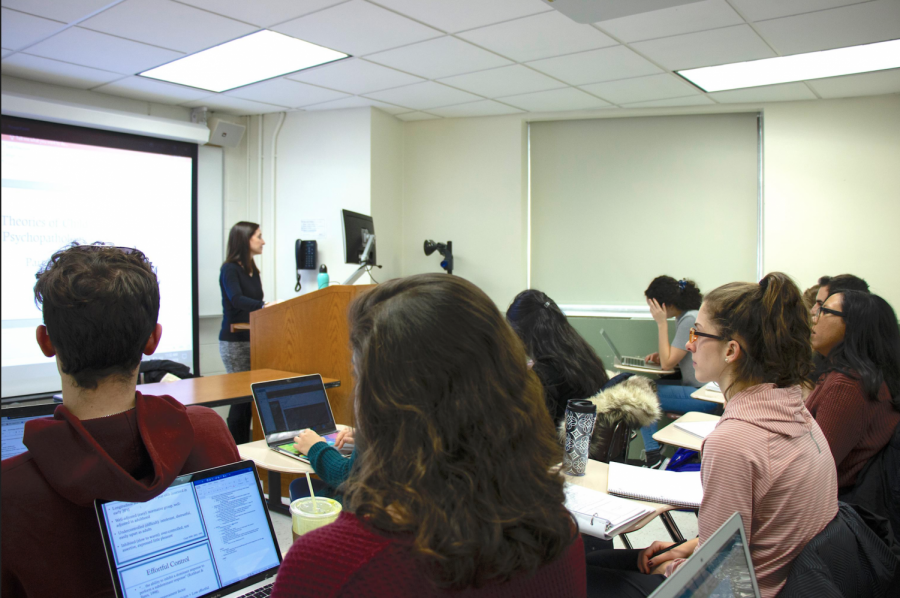Debunking Fordham’s Class Sizes
By Nicholas Zaromatidis
We all know the feeling of arriving to a 10 a.m. in Dealy at exactly 10 a.m. You tried to arrive early, but the Starbucks barista was still making your Tapingo drink, your alarm clock went off slightly late or it was just an off day.
Whatever the excuse may be, you are standing at the front of the classroom looking at the random person sitting in your unassigned assigned seat. You scour the classroom for a seat, and, if you are lucky enough to get one, it is all the way in the back of the class. You have an obstacle course of desks, legs, jackets and backpacks to wade through, but you break a sweat and finally get there. All the way in the back, squinting at the board to read the professor’s notes, you likely had one of the most ineffective classes of your life.
For those not so lucky, you have to deal with the walk of shame from the classroom to drag a desk from a different room into your classroom. Then, you probably had an extremely effective class sitting face to face with the professor in spite of all the embarrassment. We have all experienced this difficulty, but the reasoning behind it sometimes baffles us.
Often, students will attribute this issue to class sizes being too big. Cramping too many students into a classroom is detrimental to the learning process. It also poses a fire hazard. Fire codes are perhaps a less pressing matter, since Fordham University abides by fire safety regulations, but the greater issue lies in the distribution and placement of classrooms. Have you ever had class in a room with a round table where one was unnecessary?
The reverse is also true.
According to U.S. News, 51.6 percent of classes at Fordham have less than 20 students, and 47.4 percent of classes have between 20 and 49 students. Only a mere 1 percent of classes at Fordham have over 50 students. These statistics, for the most part, make sense.
The largest classes we have are large symposiums, biology and chemistry labs, and specific classes needed to satisfy the core curriculum like Philosophy of Human Nature, Philosophical Ethics and Faith and Critical Reason.
There are anywhere between 15 to 25 sections of these classes, as Fordham requires students to fulfill them. Afterwards, specific classes toward various majors are typically smaller, as the information is more dense and students require more attention from professors.
Moreover, Fordham only has a few lecture halls. Some classrooms in Keating Hall and Freeman Hall can seat a large number of students, but all the classrooms in Dealy Hall, Faculty Memorial Hall and Hughes Hall can only seat about 30 to 40 students. However, there are some rooms with round tables that are not appropriate to different classes. When classrooms are poorly assigned to seat the amount of students in the class, it polarizes the classroom environment to be either extremely spacious or congested.
The type of classroom can heavily impact a student’s ability to learn; whether it be through the distribution of desks, the size of the overall classroom or the technology that the classroom is equipped with. The room should accommodate different styles of teaching and learning. Obviously, a math or economics class would not work well with a seminar table, but most English classes would greatly benefit from this assignment.
Professors must advocate for their particular classrooms strongly and those at the university in charge of classroom sizes should take time to evaluate class size and style when selecting classrooms.
Nicholas Zaromatidis, GSB ’21, is an applied accounting and finance major from Franklin Square, New York06








































































































































































































